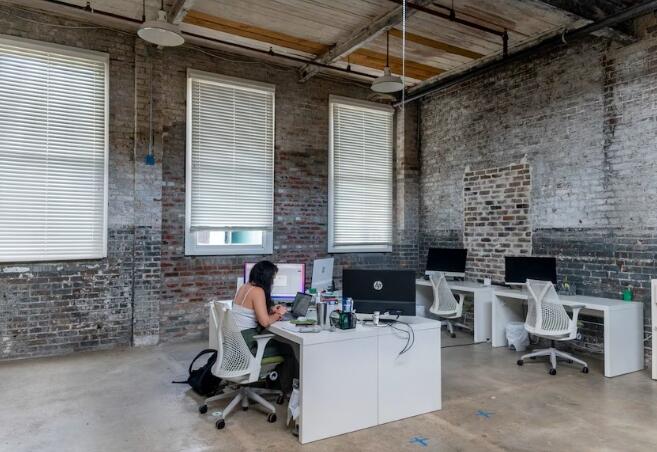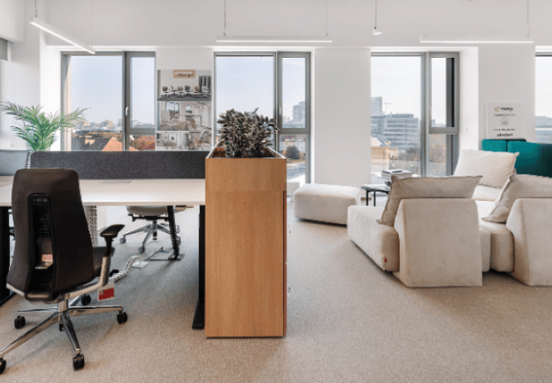The Silent Shift: Fridays Go Remote
A quiet transformation is sweeping through the corporate world: Fridays are increasingly becoming the new remote workdays. Office spaces, once bustling, now often sit nearly a fifth empty, particularly at the week's end. This profound shift, far from being a temporary trend, is reshaping how businesses view and utilize their physical workspaces, with significant implications for the commercial real estate market, especially administrative properties.
Data Confirms the Trend: A Look at Office Occupancy
The rise of the Friday home office is more than anecdotal; it’s a verified trend. Data from a survey conducted by Focus for 365.invest in Bratislava reveals a stark contrast in office utilization throughout the week. While Monday sees up to two-thirds of firms with most employees present, this figure plummets to a mere 35 percent by Friday. This pattern suggests a strategic use of office space for collaboration and meetings early in the week, reserving Fridays for individual tasks that are well-suited for remote completion.
Radko Rozum, Head of Products and Sales Support at 365.invest, confirms this observation: “The survey confirmed our assumption regarding the distribution of home office throughout the week. At the beginning of the work week, meetings and discussions usually take place, so it is probable that there is a need for presence at the workplace also from the management side.” This highlights the evolving role of the office from a daily workspace to a central hub for focused collaboration.
Rethinking Office Space: From Desks to Collaboration Hubs
With employees increasingly opting for remote work on Fridays, the traditional concept of every employee having a dedicated desk becomes economically unfeasible. This changing rhythm is compelling both building owners and tenants to re-evaluate their needs. The demand for fixed, individual workspaces is giving way to a greater interest in flexible office solutions.
Embracing Flexibility: Shared Desks and Coworking
The concept of "shared desk" or "hot desking" policies is gaining traction. In this model, employees do not have an assigned desk but instead utilize any available workstation, rotating based on their presence in the office. This approach is a cost-effective solution for businesses looking to optimize operational expenses, especially when offices are only fully utilized for a part of the week. Furthermore, the importance of coworking centers and flexible lease agreements is growing, offering dynamic scalability to match team needs without committing to extensive fixed space.
Office Design Evolves for Hybrid Work
The architectural landscape of office buildings is also adapting. New designs are tailored to support a hybrid work model, featuring dedicated zones for team collaboration, meeting rooms, and quiet pods for individual concentration. The future standard isn't just hybrid work but "hybrid offices" that fluidly accommodate diverse working styles and fluctuating occupancy rates.
Impact on Commercial Real Estate: A New Rental Landscape
The commercial real estate market faces a new reality. The demand for traditional long-term leases based on fixed square meters is declining. Instead, flexible contracts that allow space utilization based on weekly occupancy are becoming more prevalent. This puts pressure on developers to innovate, offering added value through advanced technology, sustainability features, and shared amenities to attract tenants. Office buildings are now categorized into those that adapt to this new reality and those that suffer from underutilized spaces, leading to lower rental yields and potentially even re-purposing for residential or service use.
The Four-Day Work Week: The Next Frontier?
The shift towards empty Fridays may well be a precursor to an even larger transformation: the widespread adoption of a four-day work week. Pilot programs in Europe and the United States have demonstrated that companies can maintain productivity and even improve employee well-being by reducing working hours without cutting salaries. The "100-80-100" model – 100 percent pay for 80 percent working time at 100 percent output – is emerging as a new ideal.
Legislative Momentum and Business Pilots
In Slovakia, discussions about a four-day work week are actively taking place, even within legal circles. While its implementation would require amendments to the Labor Code, legal experts agree it is legislatively feasible. Several smaller Slovak companies have already voluntarily experimented with a four-day regime, often through a free Friday or employee rotation, reporting increased satisfaction and productivity. Should this model become more widespread, it would fundamentally reshape demand for office space, allowing businesses to further optimize operating hours, energy costs, and required footprints.
What This Means for Your Business and Office Rental Strategy
The convergence of hybrid work trends and the potential for a four-day work week marks the most significant transformation of the office market since the early 21st century. For businesses seeking office space, this signals a need to move beyond traditional models. Consider flexible rental agreements, evaluate the benefits of shared desk policies, and prioritize office designs that foster collaboration and adaptability. Embracing these changes can lead to optimized operational costs, reduced energy consumption, and a more engaged, productive workforce. The future of work is flexible, and your office space strategy should be too.
Source: reality.trend.sk







